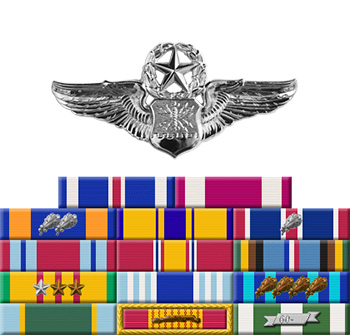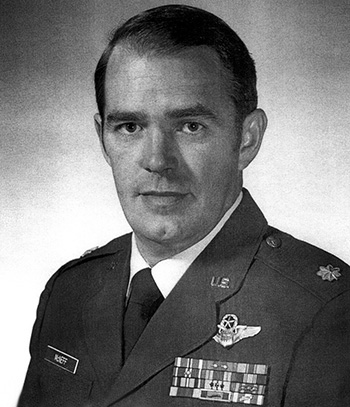
|
Charles P. McNeff |
 |
|||
| Rank, Service | ||||
Major O-4, U.S. Air Force |
||||
| Veteran of: | ||||
|
||||
| Tribute: | ||||
Charles McNeff was born on December 6, 1939, in Indianapolis, Indiana. He enlisted in the Aviation Cadet Program of the U.S. Air Force for Navigator Training on July 6, 1960, and was commissioned a 2d Lt and awarded his navigator wings at Harlingen AFB, Texas, on May 22, 1961. Lt McNeff next served as a C-124 Globemaster II navigator with the 85th Air Transport Squadron (later redesignated the 85th Military Airlift Squadron) at Travis AFB, California, from May 1961 to June 1967, followed by service as a C-141 Starlifter navigator with the 44th Military Airlift Squadron at Travis from June 1967 to April 1968. During this time, Capt McNeff deployed to Southeast Asia from November 1966 to June 1967, and from July 1967 to April 1968. He served as an HU-16 Albatross and then HC-130P Hercules navigator with the 31st Aerospace Rescue and Recovery Squadron at Clark AB in the Philippines from April 1968 to August 1970, and then as an HC-130P navigator with the 39th Aerospace Rescue and Recovery Squadron at Tuy Hoa and then Cam Ranh Bay AB, South Vietnam, from August 1970 to January 1973. During this time he served as the navigator aboard the HC-130P "Lime One" during the Son Tay Raid, a clandestine mission to rescue American Prisoners of War in North Vietnam on November 21, 1970. His next assignment was as a C-141 instructor navigator with the 18th Military Airlift Squadron of the 438th Military Airlift Wing at McGuire AFB, New Jersey, from January 1973 to May 1977. Maj McNeff's final assignment was as an EC-135J/P navigator with the 9th Airborne Command and Control Squadron at Hickam AFB, Hawaii, from April 1979 until his retirement from the Air Force on September 1, 1982. Charles McNeff died on December 19, 1997, and was buried at the National Memorial Cemetery of the Pacific in Honolulu, Hawaii. |
||||
|
||||

